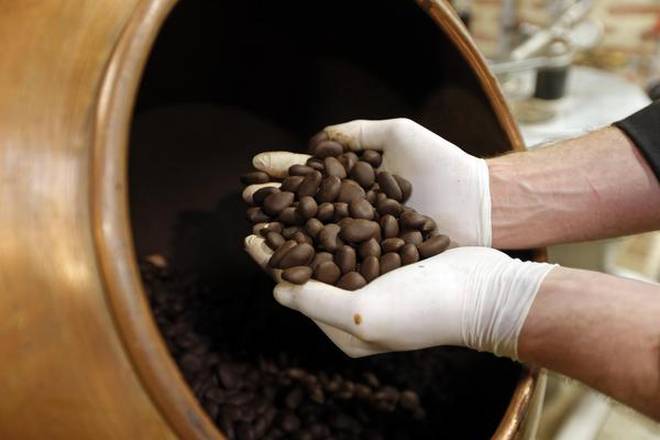The humble stone-based idli grinder is enabling a global bean-to-bar fine chocolate movement
As a child, I always thought of the idli grinder at home as my mother’s best friend, saving her a lot of trouble. This same grinder is now used to make award-winning luxury chocolates: the ones that sell at ₹800 per bar in luxury retail outlets worldwide!
In 2004, John Nanci, founder of the US-based Chocolate Alchemy, spotted a photo of an old-style melanger and noticed the resemblance to the way more affordable Indian wet grinders. This, in many ways, meant the start of the global bean-to-bar fine chocolate movement. Both hobbyists and serious chocolate-makers could now use these compact grinders and make small batches of chocolate all by themselves at home, starting right from the cocoa bean stage.
These grinders are used to refine (or grind down the size of) cocoa nibs, which are basically cocoa beans with their shells removed after roasting. The large-scale alternative in commercial and mass chocolate production is the roll refiner. Today, an Indian 100-kilogram stone grinder costs about ₹1 lakh, while a roll refiner costs ₹30 lakhs. Clearly a deterrent for a business that wants to start up.
Going the distance
In 2011, within a week of discovering that stone grinders can be used to make fine chocolate, Vincent Mourou — co-founder of Marou – Faiseurs de Chocolat, a luxury chocolate-maker in Vietnam — travelled with his business partner Samuel to source a small India-made Premier stone grinder from Little India in Singapore.
“We had discovered good cacao in Vietnam, and when Samuel and I researched the stone grinder, we understood that it was used in Indian restaurants in order to make dosa. However, for making chocolate, the grinder needs to run between 24 and 72 hours straight,” adds Vincent.
“The advantages of the Indian stone grinders are that you can achieve great results simply, immediately and inexpensively. They are also easy to use and maintain. What’s not to like?” says Vincent.
Small is powerful
Martin Christy of IICCT (International Institute of Chocolate and Cacao Tasting), UK, is very impressed with the discovery and capability of the rice grinder. “Using smaller machines, we are beginning to explore all the possible nuanced flavours of fine cacao beans. Indian rice grinders have played a crucial role in the reinvention of the chocolate bar as something delicate and noble.”
“Discovery of the efficient and effective use of Indian stone grinders for chocolate meant that the necessary budget for a start-up was achievable. I doubt the movement would have grown in the way it has if they didn’t exist,” asserts Duffy Sheardown, chocolate maker from Duffy’s Chocolate, UK. “We’ve won the ‘best chocolate in the world’ award 3 times, best in Europe, UK Golds and other awards, all with chocolate made with the Indian stone grinders,” says Duffy. “We’ve grown our company by adding 20 large stone grinders while winning world-level awards,” says Vincent in agreement.
Across the ocean
Bhavani Veerapaneni from Diamond Custom Machines has been importing into the US and distributing these Indian grinders across the world for over five years now. He is clearly pleased with the acceptance and increase in sales globally over the years. “Fresh coffee and fresh chocolate is a match made in heaven, and many cafés will have both together. This is the trend I see in the coming future.”
Amazed by the fact that the stone grinder is a catalyst in creating an industry on its own globally, Poonam Chordia, a budding bean-to-bar chocolate maker from Chennai, says, “Our humble grinder has enabled me to quite experiment and improve with each batch as small as 500 grams.”
The Indian stone grinder has also been credited with the shift towards fine chocolates, from traditionally large chocolate-making countries like Belgium to cacao-producing countries like Ecuador and Peru, where the fine chocolate culture did not exist. Warren Hsu from Taiwan, who got from experimenting to producing his own brand in under six months, agrees that all credit should go to the Indian grinders, “They are the most important accelerator to this revolution.”








